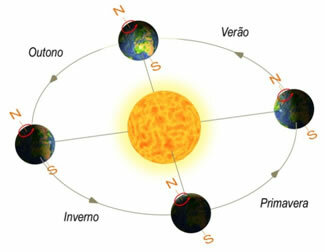Greenland, whose name means “green land”, is an autonomous region of the kingdom of Denmark and the largest island in the world
It is in the arctic region of North America and close to the North Pole. It is washed by the Arctic and Atlantic oceans, as well as the Greenland Sea, the Norwegian Sea and the Labrador Sea.
The territory is part of the Kingdom of Denmark and is about 60 times larger than that country located in Northern Europe.

Greenland is divided into 4 municipalities: Kujalleq, Qaasuitsup, Qeqqata and Sermersooq.
General data

- Capital: Nuuk.
- Territorial extension: 2,166,086 km² (¾ of its length is covered with ice)
- Population: 56,483,000 (2015 data)
- Climate: Polar. In the west it is less rigorous.
- Language: Greenlandic language.
- Religion: Christianity.
- Coin: Danish Crown.
- Government system: Parliamentary Democracy.
Greenland's glaciers are continental in type and consist of thick layers of ice that cover the relief. Studies indicate that if all the ice on the island melts, the sea level could rise a few meters. Adding the ice from the south pole to that of Greenland it is estimated that this level would rise by 70 meters.
As far as the economy is concerned, the inhabitants of Greenland live off fishing production and the export of whale oil. Greenland's subsoil is rich in lead, zinc and tungsten.
On the east coast live the Inuit, formerly called the Eskimos. These nomadic indigenous people are capable of living in temperatures below 45º C. Although popular, ice igloos are hunting shelters, used for rest and not housing.
The climate is polar. The Arctic is one of the coldest regions on the planet. Thus, even in summer there is no heat and the ground is always covered with snow (only about 410,000 km2 out of a total of 2,166,086 km² have no ice).
In Greenland is the Tundra and the taiga, which are typical vegetation types of high attitudes. Bears, moose, wolves, foxes, squirrels and reindeer are examples of animals that can be found in the taiga fauna.
The Ilulissat Ice Fjord, classified as a UNESCO World Heritage Site, stands out as a tourist attraction.
Greenland History
Greenland was occupied by the peoples vikings in the year 981 during his navigations through the northern seas. At this time, they were under the command of Erik the Red.
About 4 centuries after the discovery, the Vikings left Greenland, as they were never able to adapt correctly to the harsh climate of the region. The Eskimos are now the only inhabitants of those lands.
From the century. XVIII, Denmark claims that the territory belonged to it because of this Viking incursion and starts to occupy the island. However, in 1953 Greenland constitutionally conquered the political equality equivalent to the other parts of the kingdom of Denmark.
We have more texts about the region for you:
- Eskimos
- North American countries



